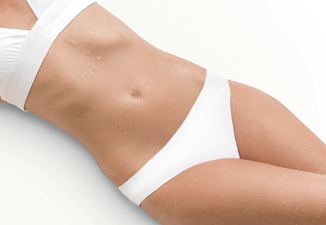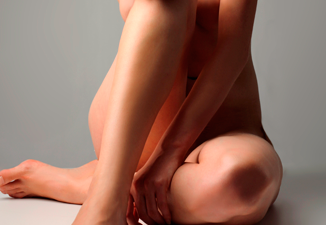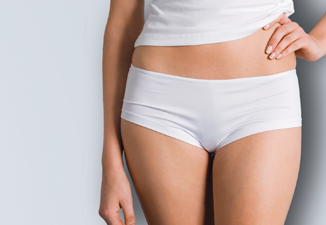
Liposuction

Facts
- Average Liposuction Cost
- $3,200
- Procedure Time
- Varies based on area
- In/Outpatient
- Inpatient or Outpatient
- Anesthesia
- Local with IV sedation, regional +/or general
- Recovery Time
- 3-21 days; strenuous activity in 3-8 weeks
- Duration of Results
- Long-lasting
What you should know
What Is Liposuction?
Liposuction, also known as lipoplasty or suction lipectomy, is the simple concept of removing unwanted fat through a vacuum apparatus to reduce fat bulges or pockets. It can also be performed using the tumescent technique. Common sites for liposuction include chin, neck, arms, abdomen, thighs, buttocks and even calves and ankles.
Several factors limit the amount of fat that can be safely removed in one session. Ultimately, you and your physician will decide on the best approach. There are negative aspects to removing too much fat. The more fat removed, the higher the surgical risk.
Liposuction is the most popular aesthetic surgery procedure according to both the American Society for Aesthetic Plastic Surgery and the American Society of Plastic Surgeons. From the use of ultrasound to lasers, liposuction involves the removal of fat with suction through small incisions that allow your plastic surgeon to sculpt and shape the curves of the body. This is a surgical procedure that requires general or local anesthesia with intravenous (IV) sedation, and should be performed in an accredited surgical facility. The area to be treated is infused with fluid to facilitate fat removal, and the actual surgical time can vary widely.
Liposuction gets rid of unwanted fat bulges when diet and exercise don’t work. It’s the gold standard for correcting figure flaws and bulges. However, liposuction is not a substitute for dieting, nor will it give you the same type of results. Liposuction should be performed after you’ve lost the extra pounds. It’s used more to contour the body and not to lose weight.
The essence of liposuction is the vacuum extraction of fat. Liposuction takes advantage of the low density of fatty tissue. When a surgeon applies a vacuum to fat, the fat is removed by the vacuum but the denser nerves and blood vessels stay intact. What remains is a latticework of blood and lymphatic vessels, along with nerve and connective tissues encased in a supportive structure. In other words, liposuction selectively removes fat without cutting or injuring the surrounding tissue.
Suction Assisted Lipo (SAL)
All liposuction is essentially suction-assisted lipectomy (SAL)—the removal of fat from the body through the assistance of some form of suction. Fat removal involves the use of a cannula (a thin hollow tube that is inserted below the skin) to manually loosen fat. Suction is applied through the cannula to remove the fat from the body with specialized vacuum-powered equipment. For small localized areas such as the face, or to harvest fat for transfer, suction may be manual, using a large syringe attached to the cannula. Improvements in SAL include the ability to use smaller cannulas, thereby leading to smaller incisions and more precisely sculpted contours. This is made possible by accompanying SAL with specialized techniques, mainly tumescence and ultrasound assistance.
Tumescence Liposuction
Tumescence is a treatment administered just prior to liposuction, during the same surgical session. Sometimes called the "wet" or "super-wet" technique, it involves infusing the area to be treated with sterile saline to help plump the fat cells and distinguish the fat layer from overlying soft tissue and underlying muscle and organs. Essentially, tumescence magnifies the fat layer, making it technically easier to remove. The saline is generally combined with the appropriate balance of lidocaine, or some other local anesthetic, for your comfort during and immediately after liposuction, and epinephrine, to constrict blood vessels and reduce bleeding and bruising.
By including tumescence with liposuction, your surgeon is able to make smaller incisions, use only mild sedation if appropriate and have better control of the area being sculpted. In addition, tumescence may reduce recovery time, discomfort, swelling, bruising and the risk of post-operative bleeding.
Ultrasound Assisted Lipoplasty
Ultrasound assistance is a technique used in addition to SAL. Some surgeons believe it improves your outcome. UAL uses high-frequency energy from ultrasound to literally rupture fat cells and dislodge them prior to suctioning.
The procedure can be either internal or external:
Internal: Internal UAL can be a one-step process when the ultrasound device is in the tip of the canulla. More commonly, UAL is performed as a two-step process, in which an ultrasound probe is first inserted to liquefy the fat before the canulla is inserted into the same incision to extract it.
External: A device placed outside the body emits energy through the skin and soft tissue to the fat. External UAL is commonly used as an adjunct to SAL.
Those who perform UAL find it useful for areas of more fibrous or dense fatty tissue, such as the back, upper abdomen or male breast region. Some plastic surgeons also find it is helpful in repeat procedures, for treating larger areas of fat, or in combination with other surgical body-contouring procedures.
Power-Assisted Lipo
PAL is not an added technique, like tumescence or UAL. It is basically suction-assisted lipectomy (SAL), with an added dimension. It uses special equipment to give the cannula the power necessary to dislodge fat instead of using the doctor's physical force and energy. PAL offers the advantage of being less tiring to your plastic surgeon.
Power-assisted liposuction is essentially traditional liposuction with the addition of an oscillating cannula head that moves back and forth. Each pass of the cannula does the equivalent of what 40 or more passes with traditional liposuction can do.
Laser Lipo
Laser-assisted liposuction uses high-powered lasers to deliver energy to heat tissues and theoretically cause skin retraction. Some doctors prefer laser liposuction; others feel there is room for error, especially in terms of burning the skin and underlying tissues.
Even though doctors still continue to debate on whether laser liposuction offers any real, added benefit, it doesn’t seem to be going to the wayside any time soon. Not a replacement for a surgical procedure that excises loose, saggy skin, the theory is that the heat emitted by the laser during the liposuction procedure can create new collagen to tighten up minimally loose skin.
Who Should Consider Liposuction
If you diet and exercise and still can’t get those pesky bulges to budge, you may want to consider liposuction. This body-contouring procedure can be used to sculpt a more ideal shape, making it more proportional. Liposuction is best for someone who has a localized collection of fat with good skin tone. The ideal candidate is within 30 percent of his or her ideal weight.
Several body parts can be worked on during one procedure. Women who have had their families and now are concentrating on themselves, for example, can opt for a flank liposuction and abdominoplasty combo. However, some surgeons prefer to perform a combination of procedures in stages, depending upon positioning, to maximize results. In post-op recovery doctors don’t want patients leaning in a certain direction and putting pressure on other areas that also necessitate healing.
Who Should Not Consider Liposuction
Liposuction is not a quick fix to take the place of a healthy diet and fitness regimen. Good skin elasticity is also a must; if you have excess skin in addition to pockets of fat, a body lift may be more appropriate, especially after major weight-loss.
Liposuction is also not a means to lose weight. The best candidates are at their goal weight, and make a commitment to maintaining a stable weight after the procedure. Liposuction is definitely a body-contouring procedure, not a weight-reduction procedure. Removal of any more than five liters requires overnight observation in a hospital and monitoring of body fluids.
What to Expect With Liposuction
It’s important to have realistic expectations about your liposuction procedure.
Although dramatic results can be achieved with liposuction regardless of the type of procedure you choose, the final results are not immediate. The success of liposuction depends on a number of factors such as age, skin elasticity, weight and overall health. A good candidate for liposuction is healthy and at a normal weight, exercises regularly, is reasonably fit, has good, elastic skin and has specific areas of the body that don’t respond to diet and exercise.
For the first few days after your procedure your skin will be bruised and swollen. Follow your doctor’s instructions and rest. Almost immediately after surgery you’ll see some difference in your body, which will continue to improve over the next three to six months.
Of all the cosmetic surgeries available, liposuction offers one of the easier recoveries. But whether your liposuction is small or large, volume dictates how long it will take before you’re back to normal. With small volume liposuction, there will be some bruising and swelling, but the day after your procedure you should be able to walk around. With large volume, the recovery is longer and more intense.
Post-Treatment Care: Liposuction
Recovery is generally not difficult, and you can expect to be up and walking around right away, which is especially important in preventing the formation of blood clots and encouraging good healing. It is likely you will wear a compression garment for a week or more after surgery to help the skin conform to the new contours. While your new and improved shape may be visible immediately after surgery, initial swelling can mask the improvement (your contours will continue to refine over the first four to six weeks after surgery). Your shape may even continue to improve for up to six months after the procedure as swelling continues to fade. During this time, be sure to stay out of the sun to prevent any pigment changes.
Depending on the areas treated and the extent of liposuction, you’ll be back to work within three to 21 days and resume strenuous activity in three to eight weeks. Patients see a noticeable improvement in the first few days through four weeks after liposuction. Improvement continues for six months post-surgery as swelling decreases. Results must be maintained with proper diet and exercise.
Inside Tips: Liposuction
Abdominal fat can be caused by stress. When you’re under large amounts of stress, the hormone cortisol is released, which, besides inducing oil production and breakouts, stimulates fat to be stored in and around the stomach. Fat can actually be used to your benefit in a surgical procedure known as fat transfer. First, a small incision is made and the unwanted fat is removed via liposuction. Next, the fat is washed and cleaned before it is re-injected into fat-deficient parts of the body like the face or butt. Since the body naturally absorbs some of the fat, a secondary procedure may be recommended to enhance your results.
According to research, fat in the stomach may have a negative impact on your lungs. In a study published in the American Journal of Respiratory and Critical Care Medicine, 120,000 Parisians were analyzed and found that those who were abdominally obese (35-inch waist for women and 40-inch waist for men) had poorer lung function than those who were slimmer. Inflamed fat tissue and excess fat can constrict the lungs, making it more difficult to breathe. Plus, the weight of the fat on the chest leaves little room for the lungs.







